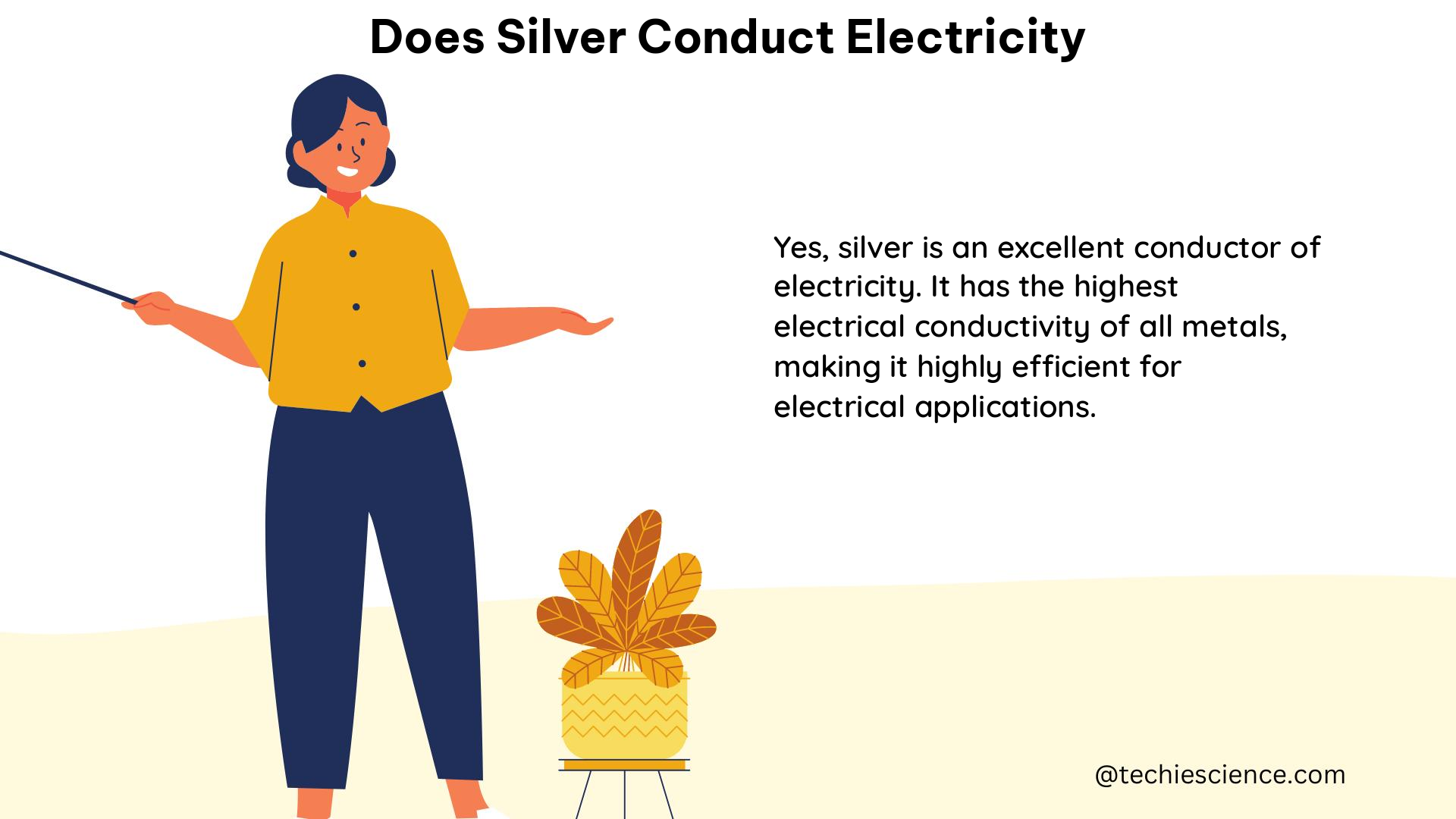Silver is an exceptional conductor of electricity, with a conductivity rating of 106.5% IACS (International Annealed Copper Standard) at 20°C. This makes it the most conductive element, even outperforming copper and gold. The high conductivity of silver is attributed to its unique crystal structure and a large number of free-moving electrons.
Understanding Silver’s Conductivity
The conductivity of a material is determined by the ease with which electrons can move through it. In the case of silver, the high conductivity is due to the following factors:
-
Crystal Structure: Silver has a face-centered cubic (FCC) crystal structure, which allows for efficient electron flow. The FCC arrangement of atoms creates a dense packing of electrons, enabling them to move freely through the material.
-
Free Electrons: Silver has a high number of free-moving electrons in its outer shell, which are not tightly bound to individual atoms. These free electrons can easily move through the material, contributing to the high conductivity.
-
Electron Mobility: The mobility of electrons in silver is exceptionally high, with a value of approximately 63.0 × 10^6 cm^2/V·s at room temperature. This means that electrons can travel through the material with minimal resistance, further enhancing the conductivity.
Factors Affecting Silver’s Conductivity

While silver is an excellent conductor, its conductivity can be influenced by various factors:
-
Temperature: As the temperature of silver increases, the thermal excitation of atoms causes a linear decrease in conductivity and a corresponding increase in resistivity. This relationship, known as the temperature coefficient of resistance, is a fundamental property of conductors.
-
Impurities: The presence of impurities, such as oxidation or the addition of other metals, can hinder the flow of electrons and decrease the overall conductivity of silver.
-
Crystal Structure and Phases: Changes in the crystal structure and phases of silver can affect its conductivity. Different processing methods or the introduction of defects can slow down the conductivity at interfaces within the material.
-
Electromagnetic Fields: External electromagnetic fields can induce magnetoresistance, which can slow the flow of current through the silver conductor.
-
Frequency: In the case of alternating current (AC), the frequency can impact the conductivity of silver. At high frequencies, the skin effect causes the current to flow around the conductor rather than through it, reducing the effective cross-sectional area and decreasing the overall conductivity.
Comparison with Other Conductive Materials
While silver is the most conductive element, it is often restricted in use due to its high cost and tendency to tarnish. Copper, on the other hand, is a more practical choice for many applications due to its efficiency, affordability, and versatility.
Gold is used in specialized electronic equipment, such as connectors and contacts, due to its reliability and corrosion resistance. However, gold is a poorer conductor than silver and copper, with a conductivity rating of 70.8% IACS.
Other significant conductive materials include aluminum, brass, and stainless steel, each with their unique properties and applications.
Advancements in Silver Conductivity
Recent advancements in additive manufacturing technology have opened up new possibilities for integrating silver into electrical systems. A study published in the National Center for Biotechnology Information explored the electrical conductivity of additively manufactured copper and silver for electrical winding applications.
The research found that silver additive manufacturing could provide a more efficient and cost-effective method for producing high-performance electrical windings, potentially expanding the use of silver in various industries. By leveraging the superior conductivity of silver while addressing its cost and tarnishing challenges, this technology could lead to innovative applications and further enhance the role of silver in the field of electrical conductivity.
Conclusion
In summary, silver is the most conductive element, with a conductivity rating of 106.5% IACS at 20°C. This exceptional conductivity is due to silver’s unique crystal structure and a large number of free-moving electrons. However, the conductivity of silver can be affected by various factors, such as temperature, impurities, crystal structure, electromagnetic fields, and frequency.
While silver’s high conductivity makes it an attractive choice, its cost and tendency to tarnish often limit its widespread use in electrical applications. Copper and gold remain important conductive materials, each with their own advantages and applications.
Nonetheless, advancements in additive manufacturing technology have opened up new possibilities for integrating silver into electrical systems, potentially expanding its use in various industries and further enhancing the role of this remarkable conductive element.
Reference Links:
- Electrical Conductivity of Additively Manufactured Copper and Silver for Electrical Winding Applications
- Discover the Best Conductor of Electricity – Phoenix – Parker & Sons
- Which Metal is the Best Conductor of Electricity? – Tampa Steel
- If silver is cheaper than gold and also conducts electricity better why …
- If gold is a worse electrical conductor than silver and copper, why are gold-plated connectors used?

I am Raghavi Acharya, I have completed my post-graduation in physics with a specialization in the field of condensed matter physics. I have always considered Physics to be a captivating area of study and I enjoy exploring the various fields of this subject. In my free time, I engage myself in digital art. My articles are aimed towards delivering the concepts of physics in a very simplified manner to the readers.